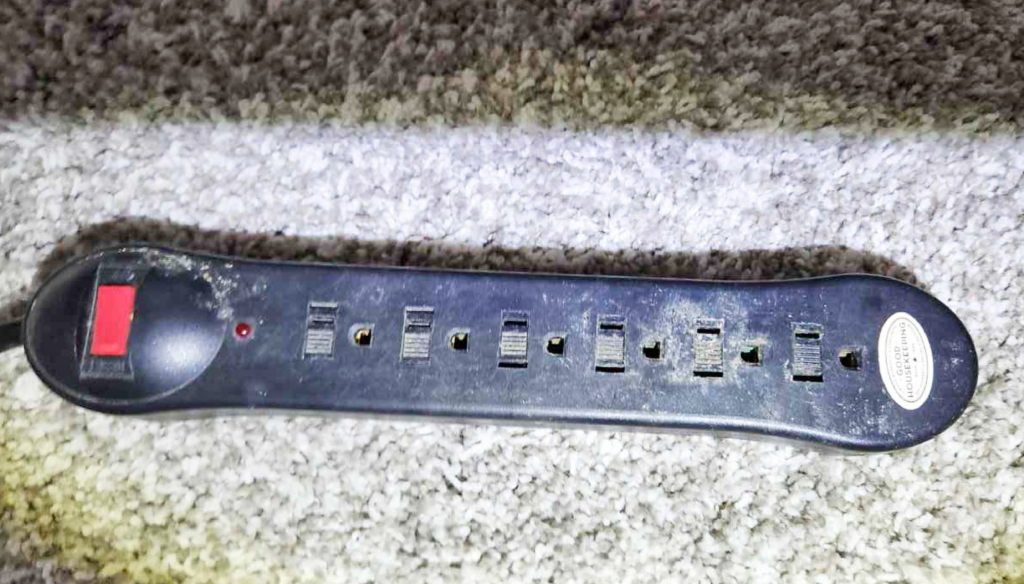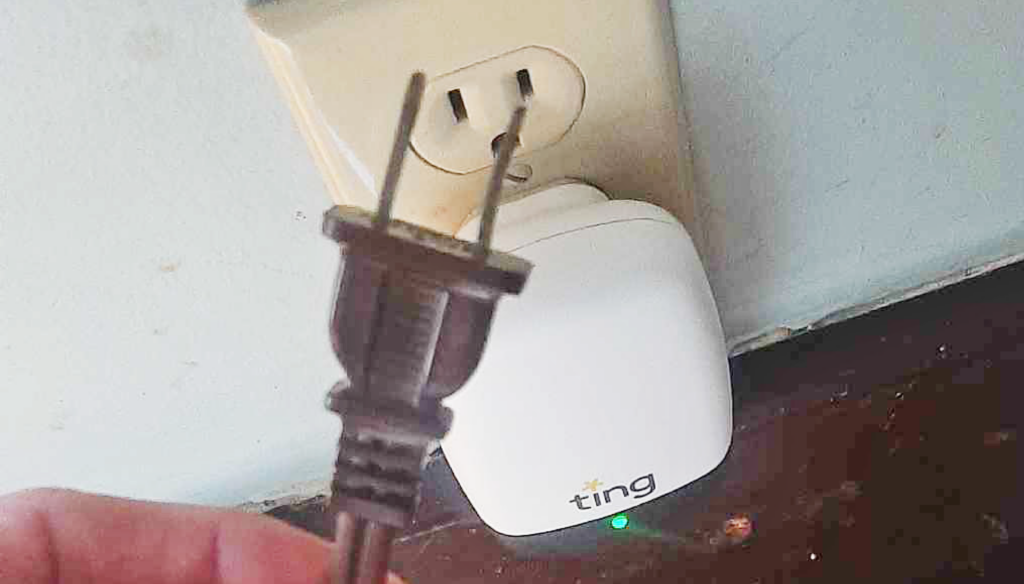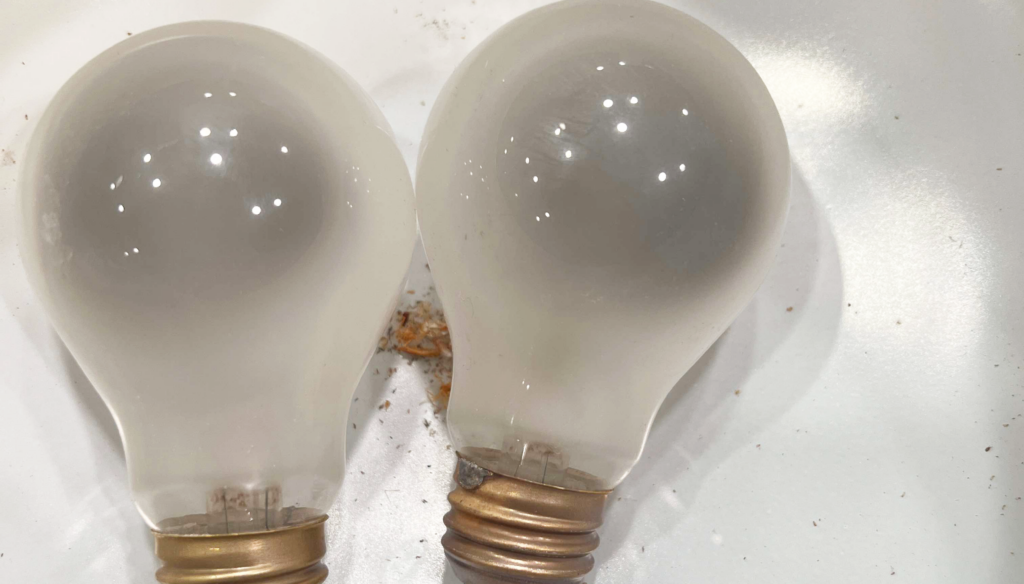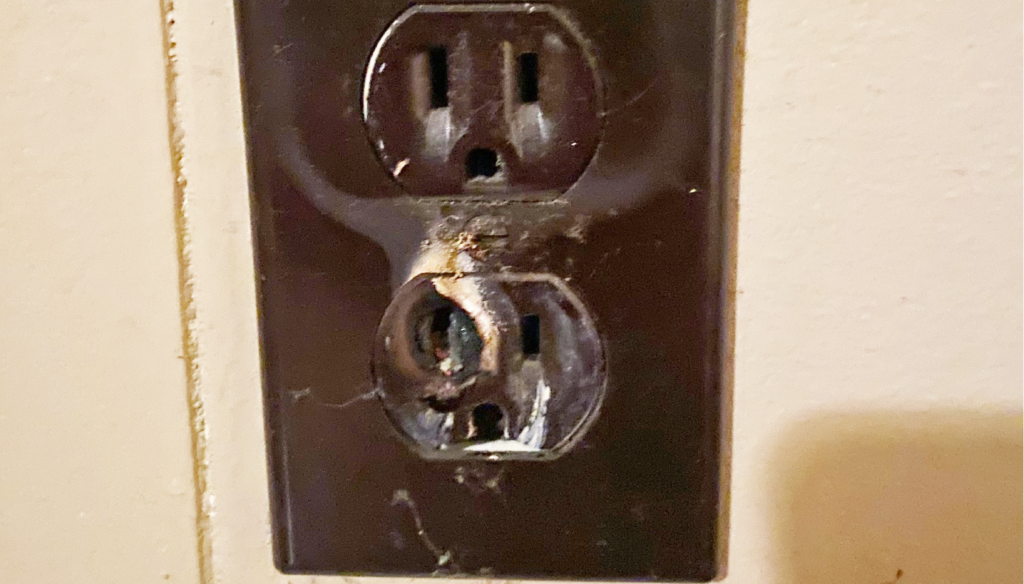2023 was another busy year. Ting helped save over 4,700 families from potential fires stemming from their home’s electrical ‘ecosystem.’ Loose wiring connections, faulty devices, utility power problems; there are numerous things that can go amiss in the complex electrical system of your home.
Each home has its own ‘electrical grid’ or ecosystem, with all the wiring, connected/plugged-in devices and appliances, and the incoming power from the electric utility. And the complexity of our home electrical systems continues to increase as solar panels, electric vehicles, battery power banks, and backup generators become more common.
Here, we focus on the top 5 sources of arcing coming from things we interact with each day. Some are more commonly documented as experiencing electrical fire hazards than others, but they all share a common characteristic – they can develop at any time and often show no discernible outward signs as they develop (that’s why we invented Ting!)
Based on all the saves our Ting Fire Safety Team helped with this year, we’re sharing 5 of the most common sources of hazardous arcing to trigger fire hazard warnings in 2023 – and what you can do to help prevent them in your home.

#5: Heating Pads & Heated Blankets
Ting regularly detects faulty electric blankets, heating pads, and heated pet beds. Poor component quality or general wear and age can cause dangerous arcing and ignite hundreds of fires a year. This is a scary thought when these devices are often used directly on our loved ones or pets.
To prevent electrical fires in warming devices:
- Use UL-certified heating pads & blankets from reputable brands. Safety is more important than a bargain!
- Never leave a heating pad or blanket plugged in unattended. Unplug it as soon as you’re done using it.
- Regularly inspect the cord where it connects to the blanket/pad and the controller for compromised insulation or loose connections.
- Be familiar with how and how not to use them, being especially careful not to compress, fold or bury them under heavy items such as mattresses.
- Replace old heating pads and blankets every ten years.
I use a heating pad for my 19-year-old Chihuahua. The Ting Fire Safety Team advised me that there was a strong fire hazard signal coming from using the pad. I greatly appreciate their quick response and for advising me of this potential fire hazard.
– April in Columbia, SC
Check out our comprehensive guide on electric blanket safety for more tips.

#4: Power Strips
Power strips are commonly used for computer areas, home offices, and other places in your home where additional electrical power receptacles are needed. But just because there are more receptacles available doesn’t mean you’re free to plug in as much as you want!
It’s important to avoid overloading power strips – an estimated 3,300 home fires originate from extension cords and power strips each year in the U.S.
To help prevent electrical fires developing from power strips:
- Only use power strips in a grounded wall outlet. Do not plug a power strip into an extension cord.
- Only plug one power strip into a given wall outlet at any one time.
- Only use power strips for low-power electronics. Avoid using power strips for window air conditioners, dehumidifiers, space heaters, and other high-power electronics.
- Use power strips that feature surge protection for better protection of devices plugged into it.
- Check power strips regularly to ensure they are not damaged.
Ting detected arcing somewhere in our house which we identified as coming from an old power strip. We never would have known it was a potential fire hazard without Ting. The power strip was located under our master bedroom bed, so clearly, we were glad to remove the threat from our home.
– Korey in Elkhart, IL

#3: Loosely Plugged-In Devices
Loose electrical connections can easily arc and create intense heat. Plugging in a device such as your coffee maker or vacuum cleaner can seem mundane, but a loose connection can be a serious electrocution and fire risk. Plugs should always fit snugly into the outlet. If a plug sags away from or entirely falls out of an outlet, the outlet or plug likely requires replacement.
To prevent electrical fires caused by loose connections:
- When plugging in a device, insert the plug straight in and ensure it feels snug and secure. Avoid plugging in at an angle or rocking it back and forth.
- After plugging in a device, ensure the cord is not dangling or in a high foot traffic area to avoid accidental snagging and loosening the connection.
- Check your long-term plugged-in devices regularly to ensure they haven’t wiggled out of the sockets. When did you last check your bedside phone charger or coffee maker plugs?
We received a notification from Ting that an issue was detected in our garage. They walked me through doing a ‘jiggle test’ on each outlet. That led us to one outlet and light switch that felt loose. I replaced both the switch and outlet and I’m grateful that Ting may very well have prevented our garage from burning down!
– Andrew in Santa Monica, CA

#2: Lighting
Lighting can include everything from the light fixtures in your home (ceiling lights, garage lighting, light switches, outdoor lights) down to the light bulbs themselves. Every year, lights degrade little by little. Original builder-grade fixtures and low-quality DIY replacements can experience premature failures. A lighting fixture itself may last well over ten years, but wire insulation can wear down, connections can corrode, and bulbs can start to not fit well in the socket.
To prevent electrical fires from your home’s lighting:
- Install hard-wired fixtures properly: poor quality connections can lead to an electrical fire. When in doubt, hire a professional! And keep an eye on the switches and cords of plug-in fixtures for wear and tear.
- Replace or tighten the bulbs in fixtures with flickering lights right away. If flickering persists, have an electrician inspect the light.
- Use UL safety-certified light bulbs that fall within the recommended maximum wattage for the light fixture.
- Consider upgrading the bulbs around your house to LEDs, which are safer, more efficient, and last longer, so you will not have to replace them as often.
- Exposed light bulbs without an enclosure (such as in your closet or basement) can get very hot and should be kept away from pipes, cords, and other objects – or replaced with a cooler-running LED bulb.
For Ting to determine that the hazard in my home was a single light bulb that was defective was astonishing. And that was resolved by simply changing the bulb; I was surprised that Ting could even find the time of day that the problem started.
– Orville in Yuba City, CA

#1: Outlets
Newer U.S. homes average about 40 electrical outlets, so it’s no wonder this is the most common electrical fire hazard Ting detects! Outlets are critical junctions where electricity is transferred from your home’s electrical system to your appliances and devices. But if there’s an issue with the wiring connections or the outlet is not used properly, arcing and overheating can spark a fire.
To prevent electrical fires from outlets:
- Outlets should be sturdy. If they can be wiggled or if they ‘move’ when plugging in a device, there’s a high risk of a loose connection forming.
- Replace old outlets after 15-25 years (depending on usage).
- Never force a three-prong cord into a two-slot outlet.
- If you notice a burning smell, discoloration, or a wisp of smoke from an outlet or the wall around it, immediately stop using that outlet, flip off the circuit breaker, and contact our Ting Fire Safety Team or an electrician.
- Install tamper-resistant electrical outlets if you have young children.
It had been a very wet winter and Ting identified arcing related to water damage. They worked with me to identify the specific outlet receiving water from a window leak. We replaced the outlet, replaced the burned circuit breakers from arcing in the sub panel, and found additional arcing with another circuit breaker approaching 40 years of service life.
– Eric in Concord, CA
Looking Ahead to 2024
As 2023 comes to an end, we want to thank each and every one of you, as part of our Ting community, for trusting us with protecting your homes and helping keep your neighborhoods safe. We’re truly inspired and encouraged by your stories and words of gratitude every day.
We hope you won’t need our Fire Safety Team come 2024, but if you do, we’ll always have your back. We wish you all a safe and happy New Year!
